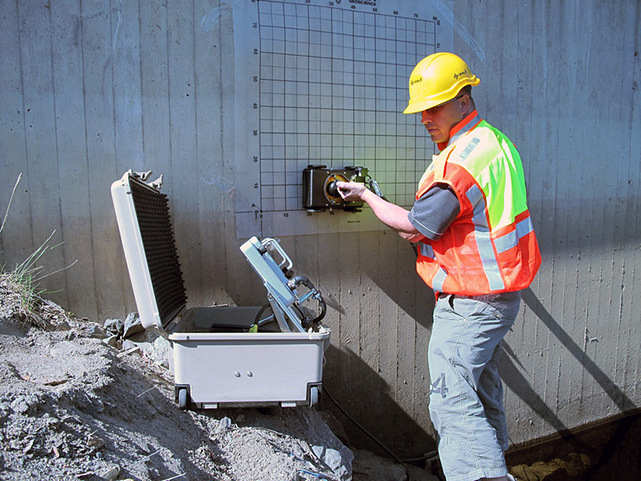Enhance Job Performance with RainierGPR Concrete Scanning Services
Enhance Job Performance with RainierGPR Concrete Scanning Services
Blog Article
Checking Out the Midst: A Comprehensive Guide to Concrete Scanning and Its Diverse Applications
In the realm of building and framework growth, the meticulous procedure of concrete scanning holds an essential duty in guaranteeing the structural integrity and safety of projects. As technology proceeds to progress, the applications of concrete scanning have broadened much past plain surface-level assessments.
Value of Concrete Scanning
Recognizing the relevance of concrete scanning is critical in making sure the safety and security and honesty of structures throughout building and renovation projects. Concrete scanning uses advanced innovations such as ground-penetrating radar (GPR) and electromagnetic induction to discover embedded things, gaps, or other abnormalities within concrete frameworks - RainierGPR Concrete Scanning. By performing thorough scans prior to boring, cutting, or coring into concrete, construction groups can prevent accidental damages to vital architectural components like rebar, channels, or post-tension cable televisions. This proactive technique not only avoids pricey repair work and project hold-ups however likewise improves overall building security by reducing the risk of structural failures or collapses due to endangered stability.
Additionally, concrete scanning plays an essential duty in making certain compliance with building ordinance and regulations that mandate the defense of existing architectural components throughout building and construction tasks. By accurately mapping out the internal composition of concrete, scanning innovations make it possible for building and construction specialists to make educated choices that maintain the structural security and durability of structures and infrastructure jobs. Essentially, the relevance of concrete scanning lies in its capacity to secure both the architectural integrity and the personnel associated with building undertakings.
Technologies Utilized in Concrete Scanning
Concrete scanning relies on sophisticated modern technologies such as ground-penetrating radar (GPR) and electromagnetic induction to properly discover embedded things and anomalies within concrete structures. Ground-penetrating radar runs by producing high-frequency electro-magnetic waves right into the concrete.
Electromagnetic induction, on the various other hand, functions by producing electro-magnetic areas around a concrete framework with a transmitter coil. When metal objects exist within the concrete, they interfere with these magnetic fields, creating eddy currents to flow via the steel. By determining the changes in the electro-magnetic fields with a receiver coil, the system can identify the location of metallic things in the concrete.
These advanced modern technologies play an important role in non-destructive screening, making sure the safety and honesty of concrete structures in various sectors.
Applications in Building Sector
Within the building industry, concrete scanning modern technology locates diverse applications that boost job efficiency and safety. In addition, concrete scanning is made use of for finding gaps, such as air pockets or areas of wear and tear within concrete, which can compromise the total toughness of a framework. Concrete scanning plays a crucial function in quality control by confirming the thickness of concrete covers over support, guaranteeing conformity with layout requirements and requirements.

Safety Advantages of Concrete Scanning
In the realm of construction safety, the implementation of concrete scanning technology offers an extremely important advantage in preemptively identifying possible dangers and fortifying structural integrity. By making use of sophisticated scanning methods such as ground-penetrating radar (GPR) and electromagnetic induction, building teams can accurately locate rebar, post-tension cables, avenues, and other hidden items within concrete structures. This aggressive technique substantially minimizes the danger of unintentional strikes during boring, cutting, or coring activities, thereby stopping costly problems, injuries, and task delays.
In addition, concrete scanning enhances worker safety and security by offering real-time information about the architectural problem of concrete elements. By attending to prospective security worries promptly, concrete scanning contributes to creating a protected functioning atmosphere and minimizing the chance of architectural failings or mishaps on building sites.
Future Patterns in Concrete Scanning
Emerging developments in scanning technology are poised to transform the area of concrete assessment and analysis. By utilizing the power of AI, these systems can analyze vast amounts of information accumulated during scanning processes to supply even more thorough and accurate insights into the condition of concrete structures.
One more considerable trend is the advancement of more portable and easy to use scanning devices. Miniaturization of scanning tools permits less complicated access to constrained spaces and remote areas, making examinations extra thorough and reliable. Additionally, developments in cordless communication innovations enable real-time data transfer and evaluation, assisting in quicker decision-making processes.
Furthermore, there is a growing concentrate on sustainability in concrete scanning modern technologies - RainierGPR Concrete Scanning. Makers are progressively including Go Here environmentally friendly products and energy-efficient attributes right into their devices to lower environmental effect. These future fads are established to boost the performance, accuracy, and sustainability of concrete scanning techniques, forming the industry's future landscape
Final Thought
To conclude, concrete scanning plays an important function in the building and construction industry by making certain the safety and security and efficiency of different tasks. By making use of sophisticated innovations, such as GPR and radar imaging, specialists have the ability to properly identify possible dangers within concrete frameworks. The applications of concrete scanning are large and remain to evolve, making it a necessary device for keeping the honesty of structures and infrastructure. As technology advances, the future of concrete scanning holds encouraging developments for enhancing building processes.

Report this page